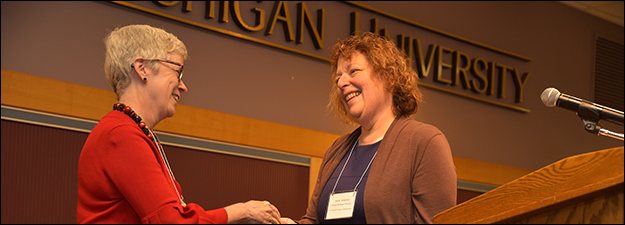Cities of Religion, Religions of the City: Religious Diversity and Urbanization in Medieval Europe
Sponsoring Organization(s)
Centre for Medieval Studies, Univ. of Bristol; Henri Pirenne Institute for Medieval Studies
Organizer Name
Benjamin Pohl
Organizer Affiliation
Univ. of Bristol
Presider Name
Robert F. Berkhofer III
Presider Affiliation
Western Michigan Univ.
Paper Title 1
The Late Medieval English Cathedral in Its City: Structural Diversity and Local Relations at Hereford, Worcester, and Gloucester
Presenter 1 Name
Richard Fisher
Presenter 1 Affiliation
Univ. of Bristol
Paper Title 2
Urban Identity as "Translatio": The Development of Caen in the Eleventh and Twelfth Centuries
Presenter 2 Name
Laura L. Gathagan
Presenter 2 Affiliation
SUNY-Cortland
Paper Title 3
A "Scabby Goat"? Theology Students between the University and the City, Paris ca. 1200
Presenter 3 Name
Jan Vandeburie
Presenter 3 Affiliation
Leverhulme Trust/Univ. degli Studi di Roma Tre
Paper Title 4
Nizhny Arkhyz: A Little-Known Holy City of Medieval Christianity
Presenter 4 Name
John Latham
Presenter 4 Affiliation
School of Oriental and African Studies, Univ. of London
Start Date
14-5-2017 10:30 AM
Session Location
Bernhard Brown & Gold Room
Description
Traditionally, studies on religious diversity within medieval urban landscapes (or 'cityscapes') have often been shaped (not to say limited) by the perceived dichotomy between religious life on the one hand, and secular life on the other. According to this view, religious communities are thought to have formed some kind of 'alien element' within the predominantly secular urban environments that developed throughout Europe from the late tenth century onwards - a 'city within a city', so to speak. In many ways, such theories of alienation and separation are still firmly rooted in the paradigms of nineteenth-century scholarship, which deliberately distanced itself from the religious focus of previous generations of historians, many of whom had been monks or priests themselves (think, for example, of Dom Jean Mabillon and the Benedictine Historical School of Saint-Maur). A few exceptional cases aside (for example, the seminal works of Dom David Knowles), the evident weakness of these paradigms and their legacy in modern scholarship lies in their fundamental inability to acknowledge and appreciate the richness and complexity of medieval religious diversity and the crucial ways in which it was shaped by (and, in turn, helped shaping) processes of urbanisation across Europe. A group of leading researchers from the Universities of Bristol (UK) and Ghent (Belgium) is currently preparing a joint research project that will dedicate itself to developing new methodological and theoretical frameworks for studying the role(s) of religious communities within medieval cities. This project will contextualise religious diversity within the dynamics of medieval urbanisation (and vice versa), thus arguing for a plurarilty of urban religions (the 'religions of the city'), rather than comparing and/or contrasting it with secular spheres of influence. This session will provide a forum for presenting and discussing some of these new approaches, inviting international scholars to participate in the development of new and innovative frameworks that will transform our understanding of medieval urban religiosity and its legacy.
Benjamin Pohl
Cities of Religion, Religions of the City: Religious Diversity and Urbanization in Medieval Europe
Bernhard Brown & Gold Room
Traditionally, studies on religious diversity within medieval urban landscapes (or 'cityscapes') have often been shaped (not to say limited) by the perceived dichotomy between religious life on the one hand, and secular life on the other. According to this view, religious communities are thought to have formed some kind of 'alien element' within the predominantly secular urban environments that developed throughout Europe from the late tenth century onwards - a 'city within a city', so to speak. In many ways, such theories of alienation and separation are still firmly rooted in the paradigms of nineteenth-century scholarship, which deliberately distanced itself from the religious focus of previous generations of historians, many of whom had been monks or priests themselves (think, for example, of Dom Jean Mabillon and the Benedictine Historical School of Saint-Maur). A few exceptional cases aside (for example, the seminal works of Dom David Knowles), the evident weakness of these paradigms and their legacy in modern scholarship lies in their fundamental inability to acknowledge and appreciate the richness and complexity of medieval religious diversity and the crucial ways in which it was shaped by (and, in turn, helped shaping) processes of urbanisation across Europe. A group of leading researchers from the Universities of Bristol (UK) and Ghent (Belgium) is currently preparing a joint research project that will dedicate itself to developing new methodological and theoretical frameworks for studying the role(s) of religious communities within medieval cities. This project will contextualise religious diversity within the dynamics of medieval urbanisation (and vice versa), thus arguing for a plurarilty of urban religions (the 'religions of the city'), rather than comparing and/or contrasting it with secular spheres of influence. This session will provide a forum for presenting and discussing some of these new approaches, inviting international scholars to participate in the development of new and innovative frameworks that will transform our understanding of medieval urban religiosity and its legacy.
Benjamin Pohl

